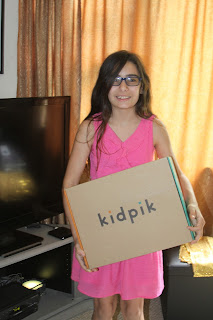My son will eat pizza every night if I let him. He loves it and I am not surprised. My husband has told me that from 7-17 he lived on Pizza only it wasn't anything like Freschetta it was a cardboard, frozen pizza that I have never served my son nor will I ever type the word. In fact buying it when we first moved in together was down right embarrassing. I am hardly embarrassed to buy my son Freschetta pizza. As an Italian mom I love cooking for my family however my kids love this stuff! In fact, I love it! It looks and smells homemade and this is coming from someone who grew up with the smells of my Great-Grandma's pizza wafting through the house whenever we visited.
FYI this is the only type of frozen pizza my daughter will eat. She likes the "spices they put in their sauce". I can't tell you that they are adding anything different but I think it is because she can see the oregano on top.














































